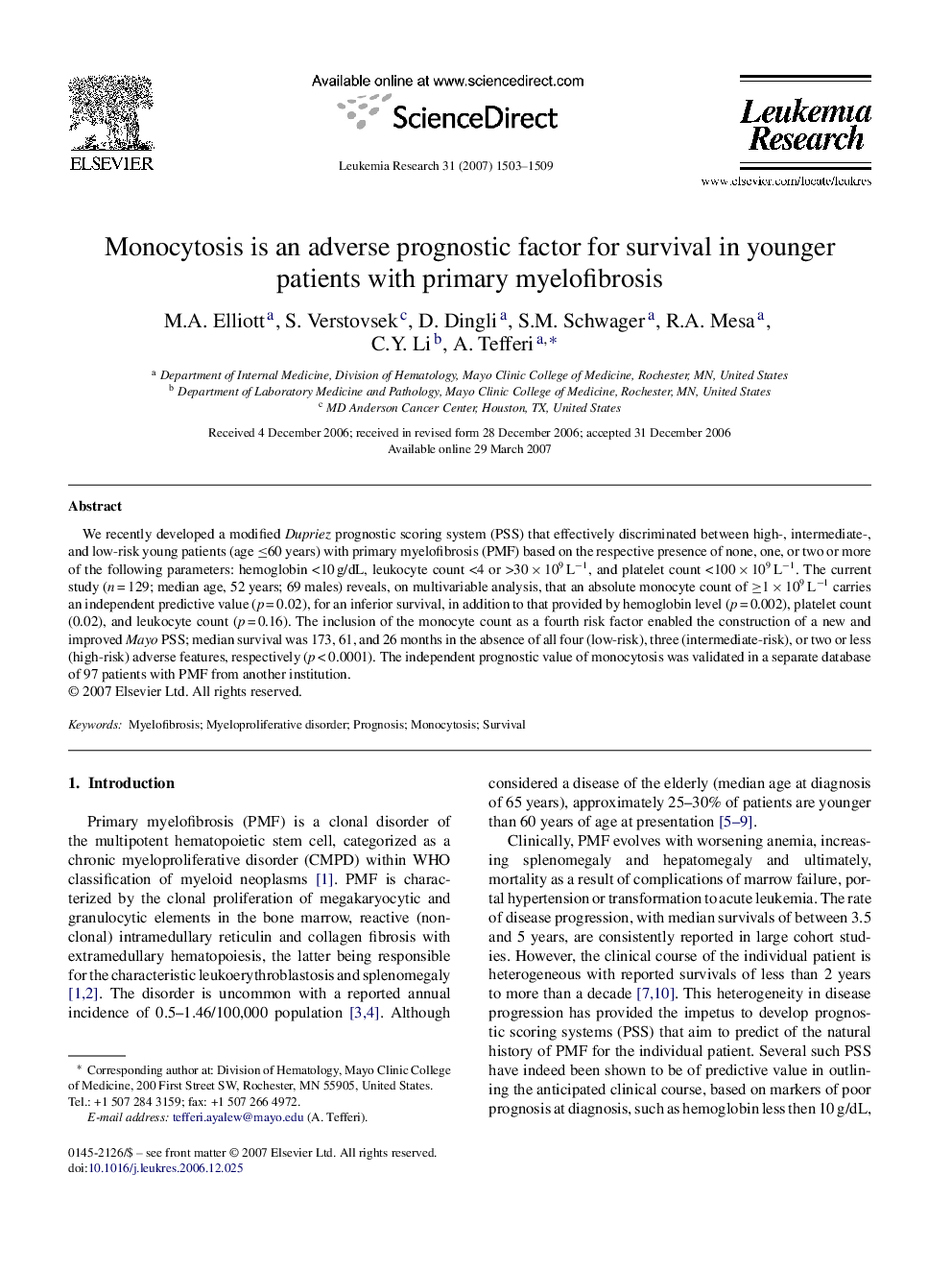| Article ID | Journal | Published Year | Pages | File Type |
|---|---|---|---|---|
| 2139478 | Leukemia Research | 2007 | 7 Pages |
We recently developed a modified Dupriez prognostic scoring system (PSS) that effectively discriminated between high-, intermediate-, and low-risk young patients (age ≤60 years) with primary myelofibrosis (PMF) based on the respective presence of none, one, or two or more of the following parameters: hemoglobin <10 g/dL, leukocyte count <4 or >30 × 109 L−1, and platelet count <100 × 109 L−1. The current study (n = 129; median age, 52 years; 69 males) reveals, on multivariable analysis, that an absolute monocyte count of ≥1 × 109 L−1 carries an independent predictive value (p = 0.02), for an inferior survival, in addition to that provided by hemoglobin level (p = 0.002), platelet count (0.02), and leukocyte count (p = 0.16). The inclusion of the monocyte count as a fourth risk factor enabled the construction of a new and improved Mayo PSS; median survival was 173, 61, and 26 months in the absence of all four (low-risk), three (intermediate-risk), or two or less (high-risk) adverse features, respectively (p < 0.0001). The independent prognostic value of monocytosis was validated in a separate database of 97 patients with PMF from another institution.
